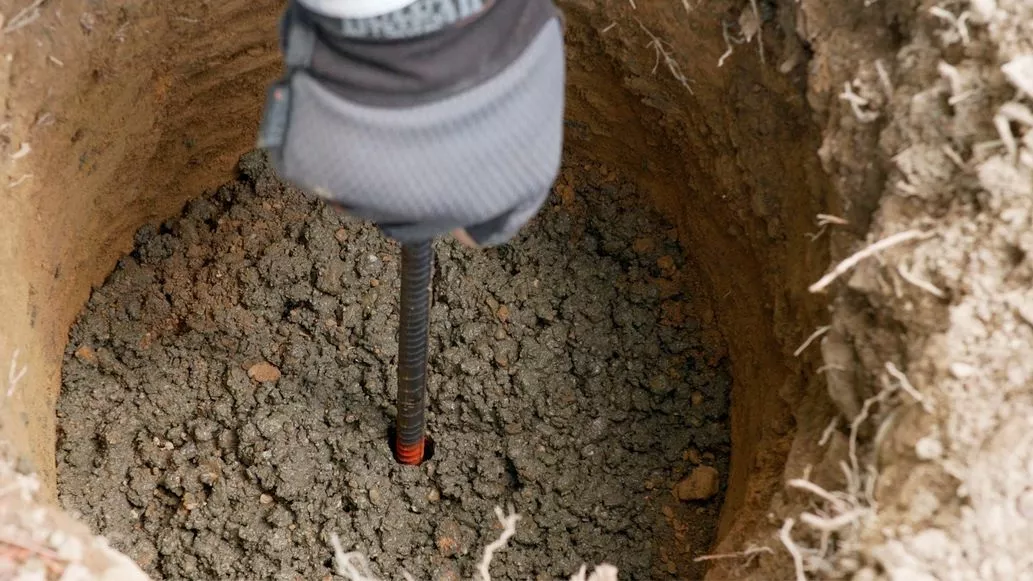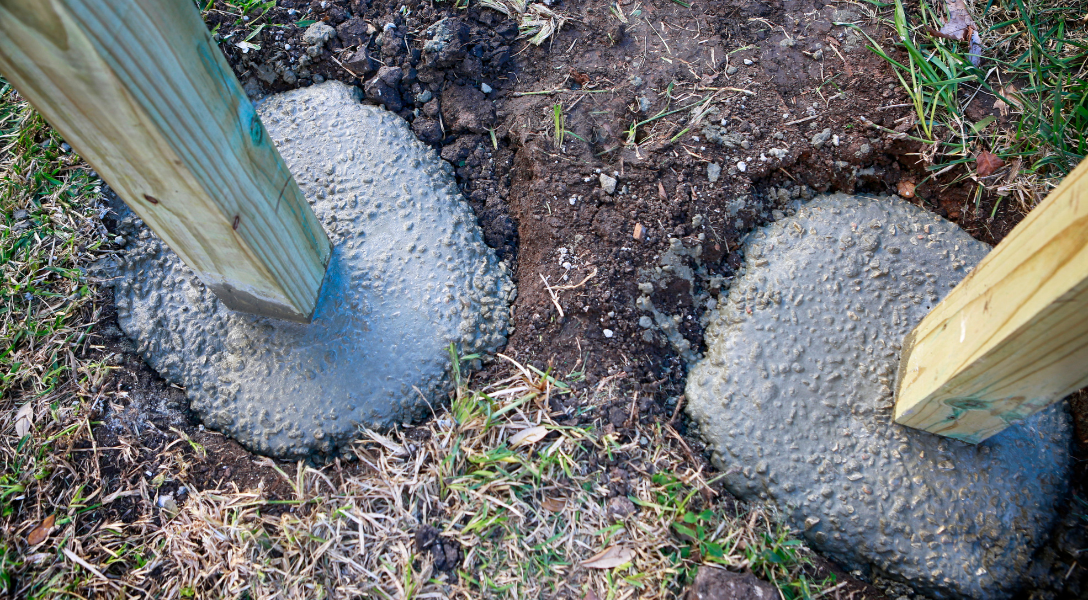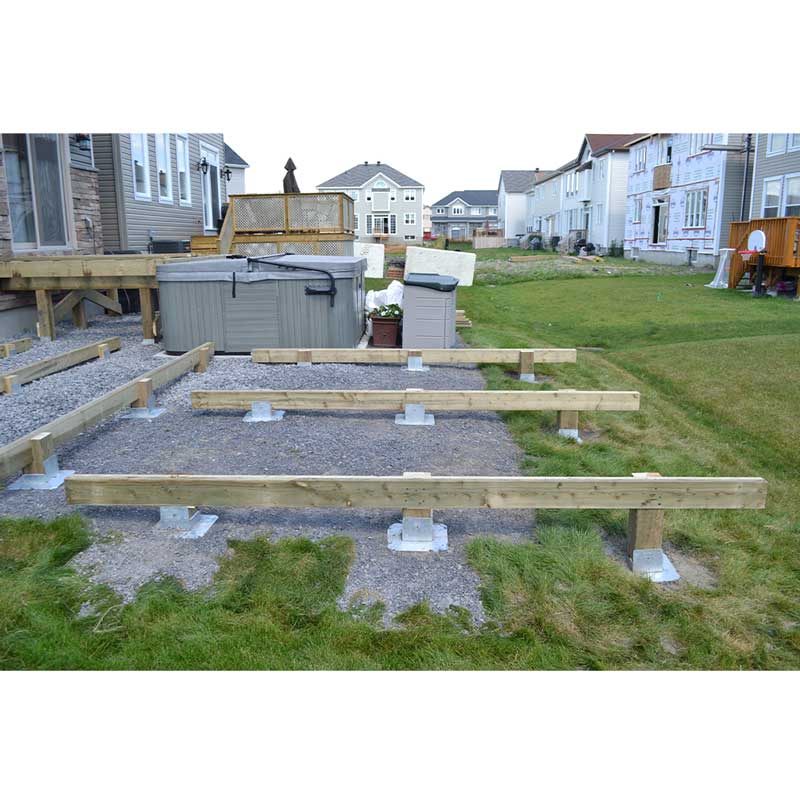Specialist Tips for Putting Up Deck Footings to Support Your Outdoor Room
When it comes to constructing a deck, one of the most critical components to consider is the installment of correct grounds. These footings are the foundation upon which your outdoor space will certainly rest, supplying security and assistance for years to come. What specifically does it take to set up deck footings correctly?
Value of Correct Deck Footings
Appropriate deck grounds are crucial for making certain the security and durability of your exterior area. Without strong and properly mounted footings, your deck might end up being unstable, leading to safety and security dangers and costly fixings.

Along with stability, correct deck footings additionally add to the long life of your outside area (Deck Footings). Footings that are designed and created to hold up against the components and dirt problems in your location will help protect against the deck from working out or shifting gradually. By guaranteeing the footings are effectively sized and set up, you can minimize the threat of damage to the deck structure, prolonging its life-span and lowering the need for pricey repair services or replacements

Picking the Right Kind of Grounds
When choosing the proper kind of grounds for your deck, it is important to consider factors such as soil conditions, regional building regulations, and the general style of your outside area. The sort of footing you pick will certainly play a crucial role in ensuring the security and durability of your deck.
One usual type of ground is the concrete ground. Concrete grounds are appropriate for a lot of dirt conditions and provide excellent support for decks.
In some cases, you might require to utilize customized grounds, such as heap grounds or deep foundations, if you are developing a huge or multi-level deck. These grounds are created to disperse the weight of the deck over a bigger location, making certain security and stopping sinking or settling.
Before picking a sort of footing, it is necessary to consult neighborhood structure codes and guidelines to guarantee compliance. Additionally, consider the layout and meant use of your outdoor space. Elements such as the dimension, form, and load-bearing needs of your deck will influence the kind of footing that is most appropriate.
Preparing the Ground for Footing Installation
To properly prepare the ground for footing setup, it is essential to analyze the dirt conditions and take essential steps to make sure stability and resilience of the deck. The initial step is to dig deep into the area where the grounds will be installed. The depth of the excavation will depend upon the frost line in your area and the particular needs of the deck style. It is important to get rid of any type of vegetation, rocks, or particles from the excavation to ensure a strong structure.
As soon as the location has been excavated, the following step is to small the dirt. This can be done using a plate compactor or by utilizing a hand tamper. Condensing the dirt helps to remove any kind of gaps or air pockets, which can result in resolving and instability over time.
After compacting the dirt, it is necessary to lay a layer of gravel or crushed stone at the base of the excavation. This will certainly give drain and assistance to protect against water from pooling around the footings, which can result in erosion and instability.
Step-by-Step Guide to Setting Up Deck Footings
After effectively preparing the ground for footing installment, the next action is to begin the process of setting up deck grounds. This step-by-step overview will certainly give you with a clear understanding of just how to set up deck grounds for your outdoor room.
Determine the area: Start by marking the placements of the deck footings making use of risks and string. Ensure that the areas straighten with the design and design of your deck.
Dig the holes: Make use of a blog post opening miner or an auger to dig the holes for the footings. The depth and diameter of the openings should be in accordance with local structure have a peek at this site codes and the certain requirements of your deck design.
Degree the holes: Make use of a level to make sure that the openings are dug to the website link appropriate deepness and are level with each other. (Deck Footings)
Add crushed rock: Place a layer of crushed rock at the base of each hole to enhance drainage and stop the timber from decomposing.
Put the footings: Position the footings right into the holes, ensuring they are degree and plumb. Use a degree and a determining tape to guarantee accuracy.
Safeguard the grounds: Put concrete right into the holes around the grounds, filling them to the top. Utilize a post level to make certain the grounds stay degree as the concrete sets.
Permit time for healing: Allow the concrete remedy according to the producer's instructions before proceeding with the deck building.
Typical Mistakes to Stay Clear Of Throughout Footing Installation
One important element to take into consideration throughout the installation of deck footings is preventing common mistakes that can jeopardize the stability and longevity of your outdoor area. While deck grounds might look like a simple and simple part of the building process, neglecting particular factors can lead to pricey fixings and prospective security risks down the line.

Furthermore, ignoring to mount correct drainage steps can cause water to collect around the grounds, bring about rot, degeneration, and the ultimate weakening of the deck's structure. Using the wrong type of footing material or falling short to properly safeguard the footings can compromise their architectural integrity.
To prevent these mistakes, it is necessary to talk to a professional or follow market standards to ensure appropriate footing installment. By doing so, you can make sure the security and longevity of your outdoor area, giving a delightful and safe environment for years to come.
Final Thought
In final thought, setting up appropriate deck footings is vital for the stability and longevity visit here of your outdoor area. By choosing the ideal sort of grounds and properly preparing the ground, you can make certain a strong structure for your deck. Complying with a step-by-step overview and preventing usual blunders during footing installation will even more improve the durability and safety and security of your deck.
Appropriate deck footings are necessary for making sure the security and durability of your outdoor area. The grounds offer as a connection between the ground and the deck, allowing the weight of the deck and its passengers to be spread uniformly into the dirt.One usual type of ground is the concrete footing. Put the footings: Position the footings into the holes, making sure they are degree and plumb. Safeguard the footings: Pour concrete right into the holes around the footings, loading them to the top.